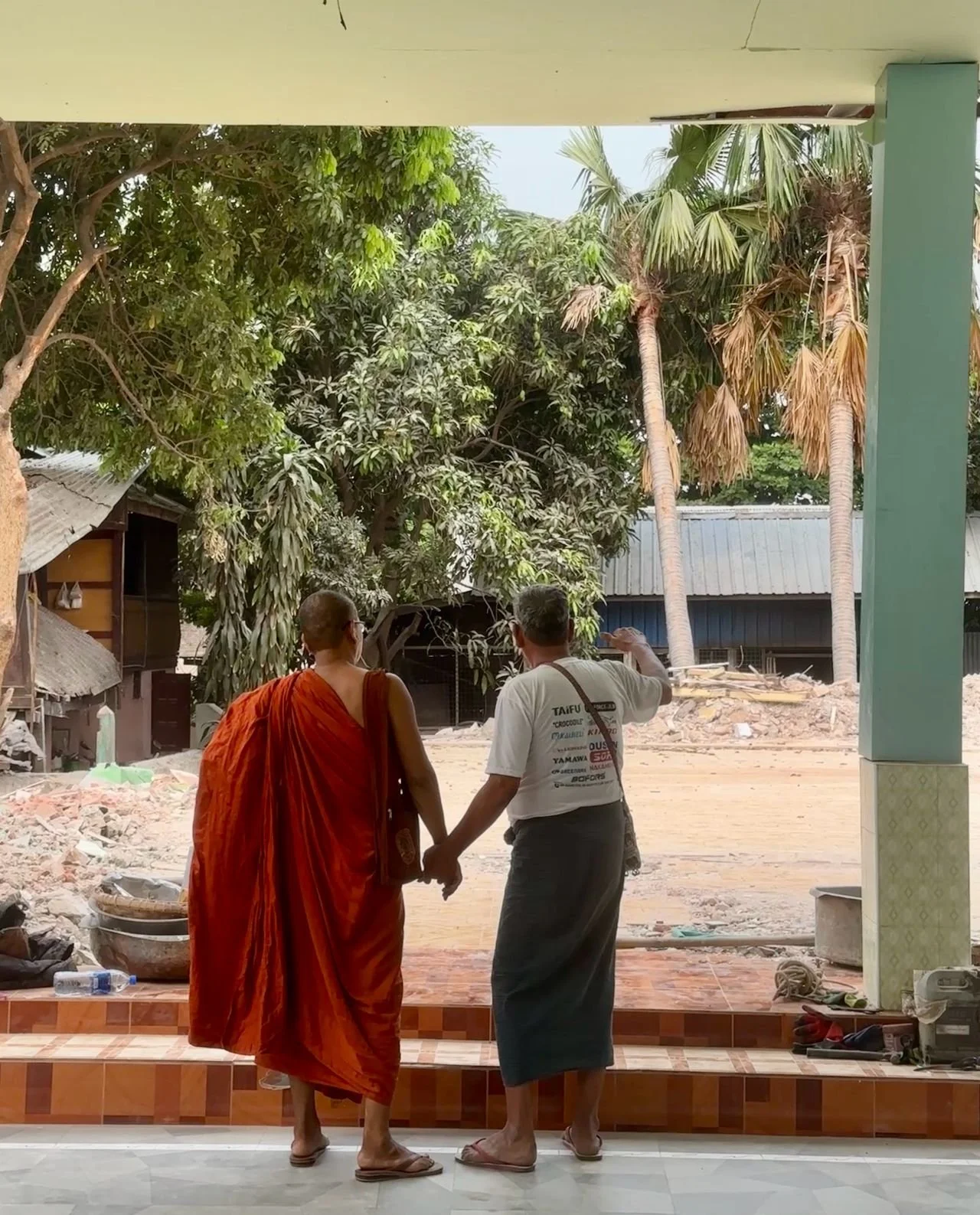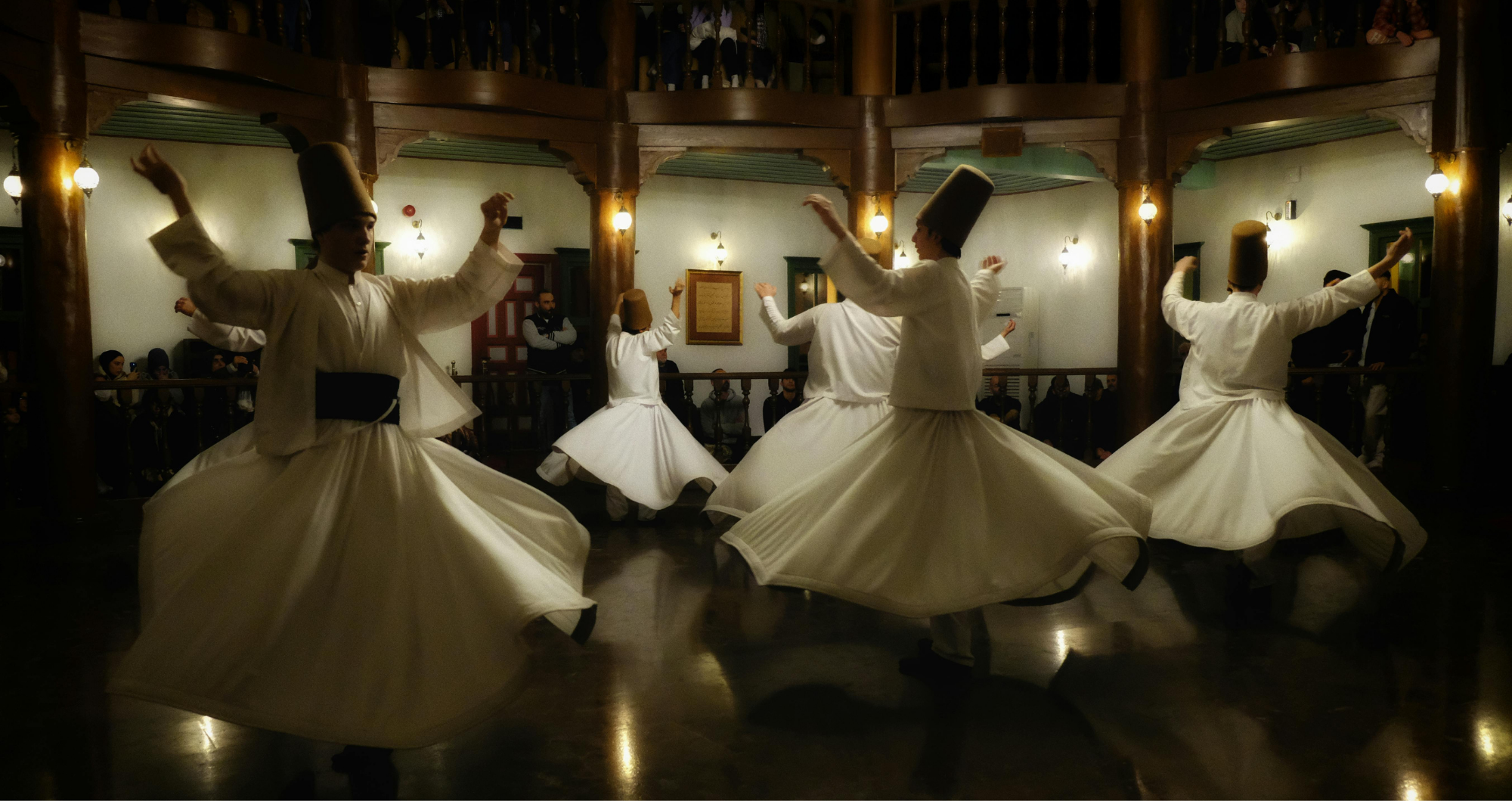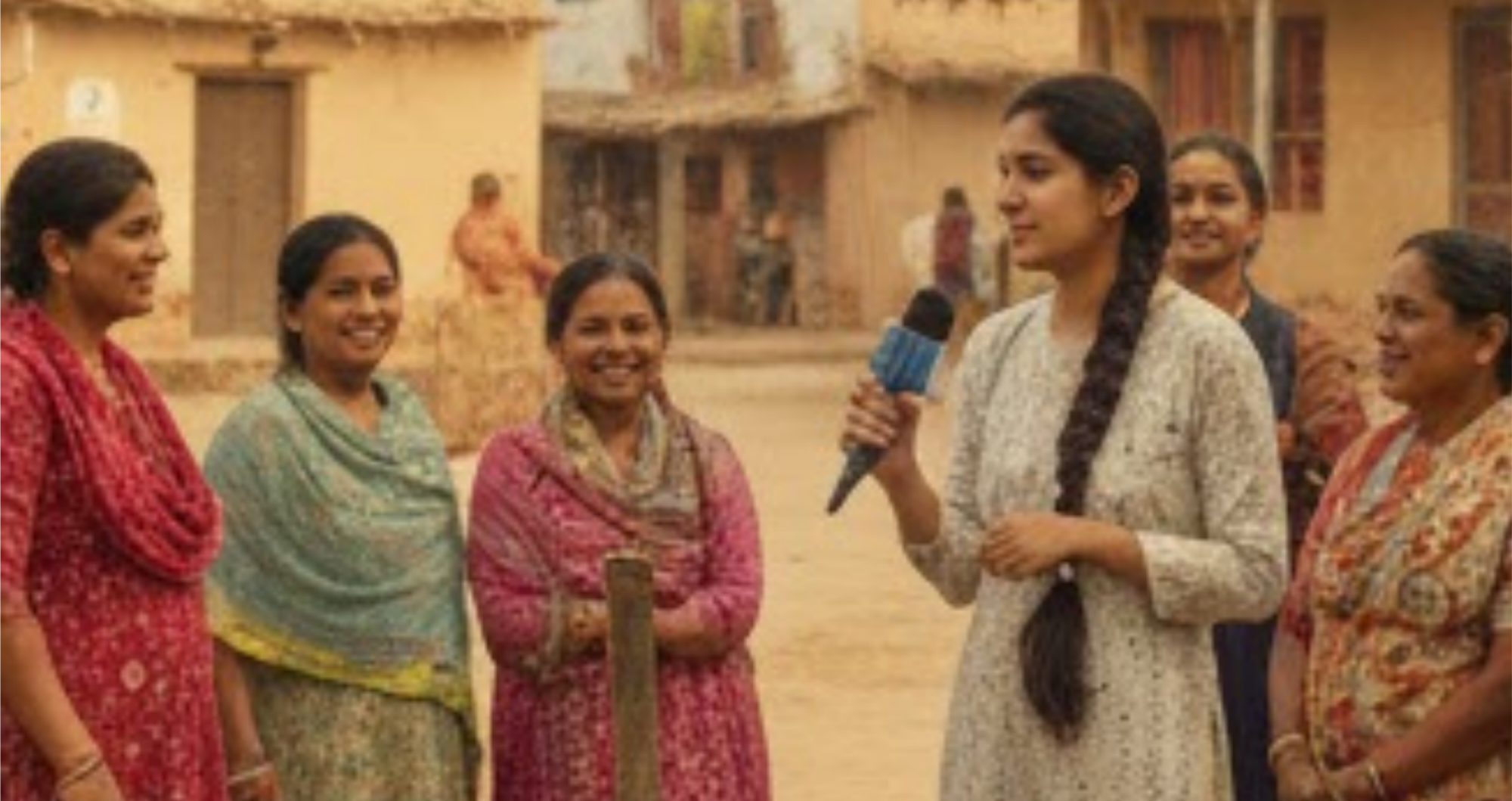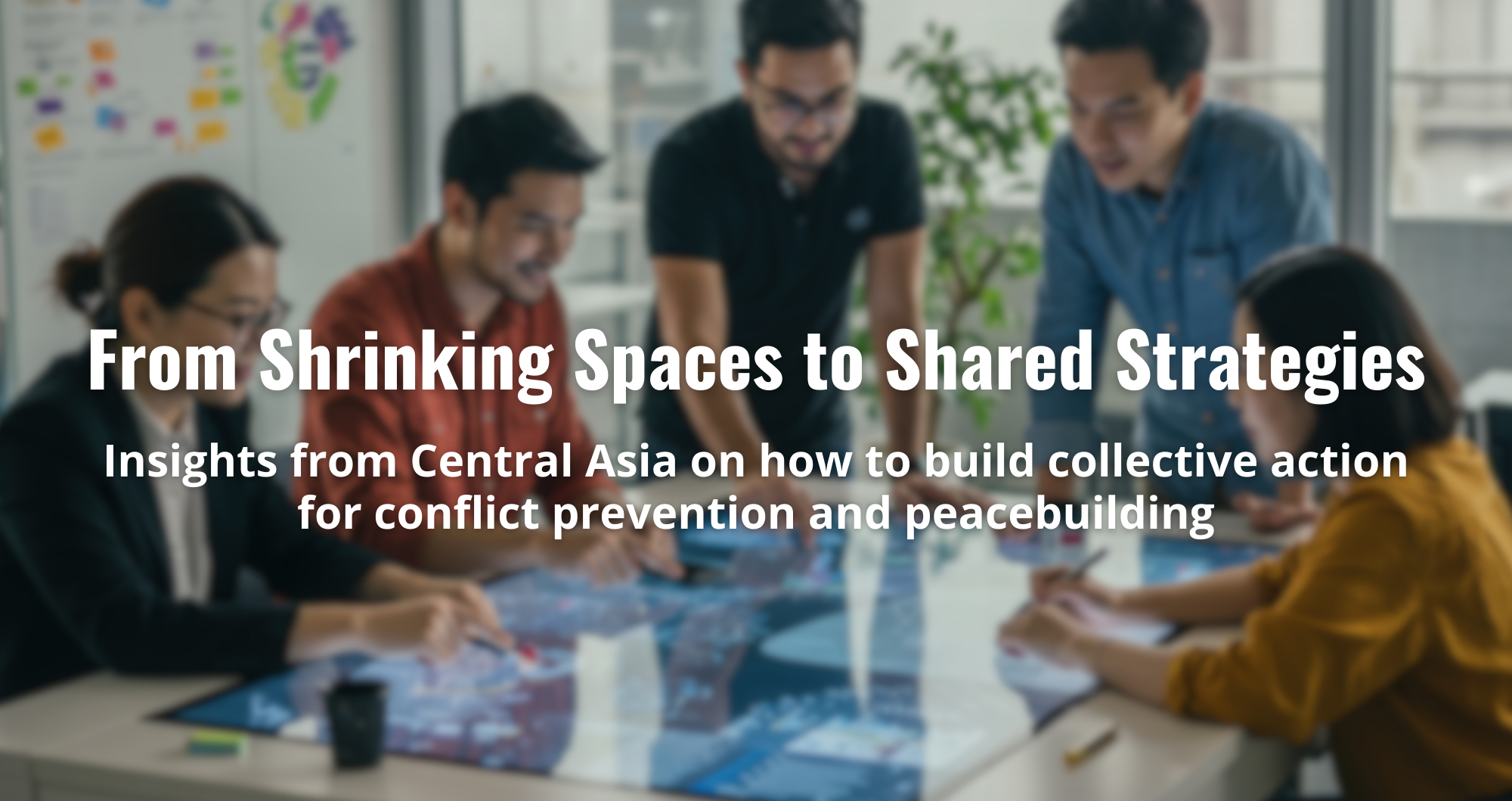Written By Chinara Esengul, Heloise Heyer, Kanatbek Abdiev, Mads Frilander, and Samara Papieva
In a time of shrinking civic space and collaborative governance is increasingly under strain, the Central Asia Peacebuilding Hub’s story shows how trust, dialogue, and collective action can still be built in innovative and grounded ways. The experiences of actors who have come together to prevent conflict and build sustainable peace in Central Asia offer important lessons for the global peacebuilding community.
During the 2025 Stockholm International Peace Research Institute (SIPRI) Forum, only one of the 46 sessions addressed Central Asia. While disappointing, it offered some hope. The session “Beyond Shrinking Space: A New Model for Collective Action in Peacebuilding” showcased how actors in Kyrgyzstan and the broader region are not only adapting to a shrinking civic space but transforming it into a platform for resilience, dialogue, and systemic change. The Central Asia Peacebuilding Hub was keen to share specific challenges, successes and learnings from their context, and to raise the importance of maintaining investment in conflict prevention from a global perspective.
Representatives from the International Business Council, Search for Common Ground, Central Election Committee, and PeaceNexus during the SIPRI Forum session on the creation of the Central Asia Peacebuilding Hub. May 2025, Stockholm, Sweden.
Although some participants of the session expressed the view that peacebuilding is not relevant to the region, Central Asia remains in a complex and fluid transition period. The Central Asian states still navigate the legacy of the Soviet past without a clearly defined shared vision for the future. While governments are trying to promote democracy and market reforms, in practice sometimes they maintain a hybrid system combining authoritarian style of governance, traditional and Islamic norms. This results in persistent “strongman” politics, widening intergenerational divides, and decreasing trust between citizens and the state.
Rising youth activism and civic engagement signal growing demand for more inclusive and institutionalized governance, yet this energy often clashes with conservative and patriarchal pushback, the increasing role of religion in politics, and shrinking civic space. Geopolitical competition further fragments the region, as China strengthens its economic influence, Russia dominates security, and Western partners promote liberal reforms. This leaves Central Asian states to balance external pressures with internal instability. Despite these divisions, emerging opportunities are becoming apparent, particularly in countries that are moving towards regional cooperation and reform efforts. Additionally, youth across all countries are showing increasing potential to drive positive change. Peacebuilding in Central Asia requires strengthening inclusive civic identity, promoting regional dialogue, supporting civil society resilience, and enabling cross-border collaboration to address shared challenges such as identity tensions, governance gaps, and socio-economic inequalities
Voices from the Region: Rethinking What Peacebuilding Means
One of the most striking insights from the session was the critical role of trust-building. In a context where the government and civil society increasingly regard each other with suspicion, the Central Asia Peacebuilding Hub has emerged as a powerful example of how inclusive platforms can foster shared ownership of peacebuilding goals and strategies to achieve them.
The Hub was initially established in Kyrgyzstan to address the challenge of fragmented peace efforts led by different international NGOs, UN agencies, and local CSOs, which often lacked interaction with other key actors, including the central government, local authorities, and the private sector. The Hub was born out of the need to create a space where civil society, state actors, businesses, and international partners could co-create peacebuilding strategies grounded in local realities. Here are some interesting ideas shared by different sector representatives during the SIPRI forum session.
Ms. Kultaeva, member of Central Elections Commission, Kyrgyz Republic:
I strongly believe that peacebuilding now extends beyond security to education, culture, technology, business and elections. As you may know, in Kyrgyzstan’s history, the election results triggered mass protests in 2005, 2010 and 2020. We have realized that to have peace and stability in Kyrgyzstan, we need to work not only on upgrading our electoral technologies but also focus on voters’ education and building dialogue with all key stakeholders. The Yntymak week is such a space where dialogue with all key stakeholders is possible, therefore we participated actively and plan to continue our cooperation with the Peacebuilding Hub in the future.
Mr.Sydykov, Head of International Business Council (business association), Kyrgyz Republic:
Businesses know that peace and stability go hand in hand with profits and lower risks, but may not see how they can be involved. Our role as a business association is to bridge this gap, be their voice in peacebuilding, and make them heard.
Platforms like Yntymak greatly help in launching this awareness in the first place and setting path for further cooperation between public and private sectors, civil society and internationals. For example, green policy incentives are far more effective than administrative measures for behavioural change not only in business, but for people in general and they contribute to conflict minimization efforts – through creating the Central Asian Green Practices Platform, we aim to change people’s attitude to business community and vice versa, through this network we move towards joint actions for peacebuilding in CA region and beyond.
Ms. Aizat Ruslanova, Executive Director of IDEA Central Asia:
From the perspective of local civil society and youth, one of the most significant contributions of the Hub has been creating genuine spaces for intergenerational dialogue. At IDEA Central Asia, we have seen that sustainable peace and the protection of civic space depend on the ability of different generations to understand one another, share lessons, and collectively respond to challenges. Our programs bring together young activists, community leaders, and experienced professionals to co-create initiatives that strengthen social cohesion and protect civic freedoms. Through activities like Yntymak Week, young people do not simply participate as beneficiaries—they engage as co-leaders, shaping discussions and proposing solutions alongside older generations. This approach has not only amplified youth voices in decision-making but has also fostered trust and continuity in civic action, which is essential to maintaining open and resilient civic spaces in the region.
Yntymak Week: A Living Laboratory for Collaboration
What makes the Hub particularly relevant beyond Central Asia is its relational approach to conflict prevention and resolution. In a sector often dominated by technical projects and siloed interventions, the Hub prioritizes safe, reflective, and purpose-driven spaces where actors can build trust and co-create solutions. Therefore, the idea of Yntymak Week (from the Kyrgyz word for “unity” or “harmony”) was born. This week is an annual peacebuilding and social cohesion event in Kyrgyzstan that unites government, civil society, business, and international actors to co-create solutions for peace. Launched in 2022 under the Peacebuilding Hub initiative with support from PeaceNexus, UN agencies, and key partners, it has become a key platform for dialogue and collaboration across sectors.
In 2025, the Yntymak Week was not just another event with conferences and workshops, it functioned as a living laboratory of collaboration, where people did not just share their experiences but worked together to define what peacebuilding and social cohesion mean in Central Asia today.
Government institutions and experts on governance in the Social Cohesion and Peacebuilding session. Yntymak Week, September 2025. Bishkek, Kyrgyzstan.
One example emerged during a session on civic identity and public services, where representatives from the Ministry of Culture, a youth NGO network, and a regional media outlet recognized that state messaging was failing to resonate with local communities. Instead of leaving this observation as a discussion point, the Hub convened a working group that co-designed a pilot communication model in which young people helped shape the content and delivery of civic identity campaigns. The Ministry later integrated this model into its 2024 outreach plan, demonstrating how the platform can translate dialogue into concrete policy shifts.
In another case, business leaders expressed interest in contributing to social cohesion but were unsure how to align commercial interests with peacebuilding objectives. Facilitated conversations between the International Business Council and civil society actors led to the idea of creating the Central Asian Green Practices Platform, where businesses, NGOs, and local authorities collaborate on sustainability projects that reduce resource-related tensions. This initiative is now being developed as a regional mechanism, showing how cross-sector dialogue at Yntymak Week can evolve into long-term innovation well beyond the event itself.
Government institutions and experts on governance in the Social Cohesion and Peacebuilding session. Yntymak Week, September 2025. Bishkek, Kyrgyzstan.
Lessons for Global Peacebuilders
For global actors navigating similar dynamics—from Eastern Europe to parts of Africa and Latin America—Central Asia’s experience reinforces four key takeaways.
First, peacebuilding legitimacy grows from co-creation. Initiatives must be shaped by and with, not for, local actors. The Hub succeeded because it avoided prescriptive designs and instead invested in building a collective “we” among the stakeholders.
Second, strategic communication is critical, not just nice to have. Members and stakeholders in the Hub recognize that their efforts must resonate beyond expert circles. Through inclusive storytelling and media engagement geared towards a larger audience, they made peacebuilding accessible and connected with people’s lived realities and identities — building broader public support in the process.
Third, a culture of learning must be deliberately cultivated. Reflective practice was not assumed; it was built over time, through shared experiences, with readiness to show vulnerability and share about failures and challenges, and using peer learning and support to find solutions and work through those difficulties.
Finally, regional solidarity must grow organically. Rather than impose structures, the Hub focused on visibility, dialogue, and relationship-building—planting seeds for long-term cooperation that respects cultural and political nuances.
As civic space contracts globally, and as attention is pulled toward managing conflicts once they’ve become violent – when it’s hardest – these lessons from Central Asia are more urgent than ever. Peacebuilders must move beyond siloed interventions and invest in ecosystems of collaboration that can withstand political turbulence. Central Asia’s experience doesn’t offer a blueprint, it offers hope—and a compelling invitation to reimagine what collective action for conflict prevention and peacebuilding can look like in today’s fractured world.
Issue 03 | Reimagining a New Generation of Peace
-

No Planet, No Peace: Reimagining Peacebuilding through Planetary Stewardship
-

When the Earth Shook, Faith Held Us Together
-

Reimagining Peace through Rumi’s Lenses: A Voyage into Poetic Wisdom, Politics, Diplomacy, and the Transcendental
-

An Alternative Peacebuilding Vision in a Post-Liberal Era
-

Sing My Soul
-

Reimagining a New Generation of Peace with Servant Leadership and Nonviolent Communication
-

Threading the Future: Mentoring the Next Generation of Peacebuilders
-

If We Can Teach AI to Practise Empathy: Nonflict and a Generation of Peacemakers
-

Peace Leader Spotlight | From Grandmother’s Legacy to Global Peacebuilding: Issah Toha Shamsoo
-

Young Leaders for Peace: Meeting the Moment through Youth Peace Leadership Development at the University for Peace
-

Reimagining Peace Through Young Voices in India: Spotlight on Women Journalists and Their Stories
-

Peace Dwelling and Belonging: Stan Amaladas on rethinking what it means to live well with each other
-

Pockets and Peace Design: A collaborative design framework to advance health equity and build peace
-

From Shrinking Spaces to Shared Strategies: Insights from Central Asia on how to build collective action for conflict prevention and peacebuilding
-

From War Memories to Peace Encounters: Constructive Usage of Veteran Experience
-

Call for Submissions | Issue 04




